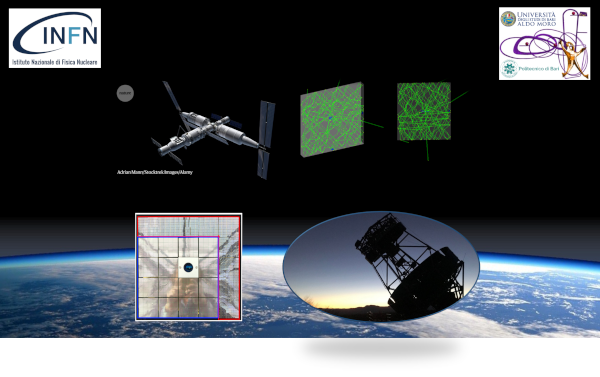 The observation of the Universe in the multimessenger era has just started. Several new-generation detectors have been proposed to improve the results of current experiments with enhanced discovery capabilities. In particular, gamma-ray astrophysics has a key role in understanding the mechanisms which regulate the processes in our Universe.
The observation of the Universe in the multimessenger era has just started. Several new-generation detectors have been proposed to improve the results of current experiments with enhanced discovery capabilities. In particular, gamma-ray astrophysics has a key role in understanding the mechanisms which regulate the processes in our Universe.
The High Energy cosmic-Radiation Detection (HERD) facility is a future satellite experiment to be installed on the Chinese Space Station by the end of 2027. Its main goal is the detection of cosmic rays and gamma rays.
To identify the nature of incoming particles, the Plastic Scintillator Detector (PSD) is being developed in Italy, with a leading role of INFN Bari.
The basic design consists of a segmented plastic scintillator, to be operated as a veto for selecting gamma rays in the background of charged cosmic rays. In addition, since the scintillation light yield is strongly correlated with the charge of the particle, the PSD provides precise measurements of the charge of incoming cosmic rays. In this presentation, a summary of the tests performed on a prototype of the PSD will be shown, including both laboratory and beam test measurements.
A detailed simulation of the PSD prototype has also been developed, which correctly reproduces the experimental data.
The Cherenkov Telescope Array (CTA) is a future experiment to detect very high energy gamma rays (above tens of GeV) of astrophysical origin with ground based telescopes.
These telescopes will detect the air showers generated by gamma rays and cosmic rays interacting with the Earth’s atmosphere. The images projected in the telescope cameras allow the particle identification (gamma-ray or cosmic ray hadron) and the measurement of their energy and direction.
Among the proposed telescopes, the Schwarzschild-Couder Telescope (SCT) design is highly innovative. It will be equipped with a double mirror optics and a highly granulated camera based on Silicon Photomultipliers (SiPMs).
These sensors have been widely studied in the INFN laboratories to improve the SiPM technology and reach the CTA requirements. The readout electronics is based on a preamplifier ASIC, named SMART, which has been designed at INFN-Bari and is optimized for the SCT SiPM signals.
A prototype of the SCT has been installed at the Fred Lawrence Whipple Observatory in Arizona and is currently in the commissioning phase.
Similar detection techniques are also used to detect natural radioactivity on Earth’s surface. A novel detector for gamma rays in the energy range 100 keV - 2 MeV will be illustrated.
This detector is based on the coded mask technique, in which an opaque segmented mask is placed between the radioactive source and the detector, which consists of a crystal scintillator array.
The shadow produced by the mask on the scintillators allows the precise reconstruction of the source position. In this presentation, a prototype detector made of a 4x4 scintillator array coupled to photomultiplier tubes (PMTs) is described and its performance in terms of energy and angular resolution will be shown.
An upgrade of this prototype is foreseen in the near future.
Relatore: Leonardo Di Venere
